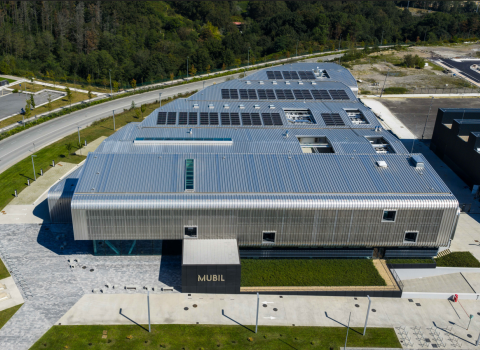Underground hydrogen storage could be the solution to bottlenecks in the current energy transition. This type of hydrogen storage poses a number of challenges that have not yet been adequately investigated. Utrecht University may have the answers. Dr Suzanne Hangx, a geologist at Utrecht University, explains, "To ensure safe and efficient hydrogen storage, we need to understand how underground reservoirs behave under the continuous injection and extraction of hydrogen fluid. Utrecht University's High Pressure and Temperature Laboratory is one of the few labs in the world with a wide variety of facilities that can simulate the conditions of the subsurface at several kilometres depth. This puts our research group in a unique position to investigate the mechanical impact caused by the pressure changes caused by temporary or seasonal hydrogen storage."
Subsurface, porous, geological formations, such as saline aquifers and depleted oil and gas hydrocarbon reservoirs, provide substantial opportunities for storing large amounts of hydrogen. However, as Dr Suzanne Hangx explains, “The continuous injection and extraction of hydrogen fluid will mean the storage system is exposed to cyclic changes in the fluid pressure in the pores of the rock, as well as changes in the chemical environment. This will affect the movement of hydrogen and other fluids, in the storage reservoir, such as saline water, the chemical reactions that may take place and even the behaviour of microbes – all three with their own challenges. In addition, the underground reservoir will be subjected to variations in pressure, which will affect the reservoir rock and any faults in it. This can have consequences for the mechanical behaviour and strength of the rock and faults, potentially leading to surface subsidence, induced seismicity or leakage. In the High Pressure and Temperature Laboratory (HPT-lab), we can simulate these conditions very accurately, which gives our researchers the opportunity to investigate the mechanical behaviour in response to hydrogen injection-extraction in more detail. Already industry has shown great interest in joining forces with the HPT-lab to study underground hydrogen storage.”
The challenges and knowledge gaps in hydrogen storage in porous reservoirs have been identified in a study published in Energy & Environmental Science. The study is the result of a collaboration between Hangx and scientists involved in the UK HyStorPor project external linkand GEO*8, the European Alliance for Earth Sciences, a consortium of leading European earth science research organisations, including Utrecht University. They argue that there is an urgent need for multidisciplinary research to address the challenges of safe and efficient hydrogen storage.
Why hydrogen?
The generation of sustainable energy is subject to daily and seasonal fluctuations due to the fluctuating availability of sufficient wind power or solar radiation. Therefore, for continuity, it is important that renewable energy is stored in periods of surplus to be used in periods of shortage. An efficient way to do this is to convert the surplus of renewable energy into hydrogen fuel, via the electrolysis of water. Hydrogen is of global interest because it can help decarbonise transport, heating and energy-intensive industries such as chemicals and steel. In short, hydrogen can help overcome a major drawback of renewable energy generation, namely its intermittency.
This article was first published on May 18 by Utrecht University.





 A unique international forum for public research organisations and companies to connect their external engagement with strategic interests around their R&D system.
A unique international forum for public research organisations and companies to connect their external engagement with strategic interests around their R&D system.